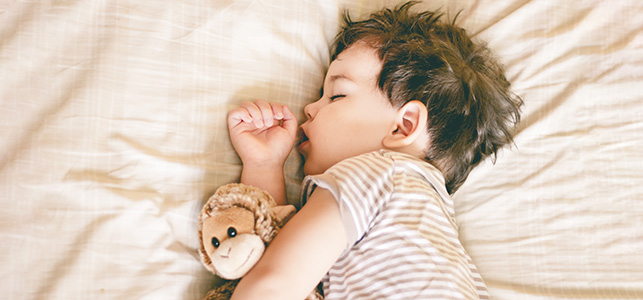
We’ve all seen or been in this scenario: A fussy baby is screaming, and a frenzied parent quickly soothes them with a pacifier. Pacifiers are one of the most effective tools to soothe a distraught infant, but what happens when a child is older and the pacifier has become a crutch, now impacting how their teeth are growing? This is one example of how an orofacial myofunctional disorder develops.
You may be wondering—what exactly is an orofacial myofunctional disorder (OMD)? According to the American Speech-Language-Hearing Association, OMDs are movement patterns of the muscles of the mouth and face that interfere with normal growth, development or function of orofacial structures. Over time, these disruptive patterns can lead to structural changes such as teeth becoming misaligned (e.g. overbite or underbite), articulation disorders (e.g. lisp) or even breathing issues (e.g. mouth breathing). OMDs are common at all ages—from babies to grownups. The tricky thing is that they often co-occur with a variety of speech and swallowing disorders.
According to the Mayo Clinic, while there are pros and cons to pacifier use, one of the cons of extended pacifier use is the effect it can have on the development of teeth. This leads to long-term dental problems, such as an open bite, which can only be fixed with orthodontic treatment. However, it’s important to note that OMDs can be due to any number of factors related to the mouth.
The American Academy of Pediatric Dentistry recommends beginning to phase out pacifiers by 24 months (but sooner is okay too!). Tips for a successful transition include:
If pacifier use continues past 3 years, children should be evaluated by an orofacial myologist, or professional clinically trained in the process of weaning a child from extended thumb/finger/pacifier/bottle sucking, to prevent long-term oral problems. The Feeding Program at our Brook Road Pavilion has an orofacial myologist who helps with weaning kids from unhealthy oral habits or behaviors that can hinder their health and oral development for the long term. A pediatric dentist can also provide guidance on tooth development and growth.
By Amaka Winslow, M.S., CCC-SLP, orofacial myologist in training
References:
ASHA Practice Portal. (2024, August 13). Orofacial Myofunctional Disorders. https://www.asha.org/practice-portal/clinical-topics/orofacial-myofunctional-disorders/#collapse_4
Delta Dental. (2024, August 13). Pacifiers and oral health. https://www.deltadental.com/us/en/protect-my-smile/life-stages/infants-toddlers/pacifiers-oral-health.html#:~:text=But%20the%20AAPD%20recommends%20that,begin%20before%20age%2024%20months.
International Association of Orofacial Myology. (2024, August 13). What are Orofacial Myofunctional Disorders? https://iaom.com/faq/
Mayo Clinic Healthy Lifestyle: Infant and Toddler Health. (2024, August 13). Pacifiers: Are They Good For Your Baby? https://www.mayoclinic.org/healthy-lifestyle/infant-and-toddler-health/in-depth/pacifiers/art-20048140#:~:text=Pacifier%20use%20might%20increase%20the,might%20lead%20to%20dental%20problems.